-
Old concrete helps keep water clean
Lakes and streams are often receiving so much phosphorous that it could pose a threat to the local aquatic environment. Now, researchers show that there is an easy and inexpensive way to prevent phosphorus from being discharged to aquatic environments. The solution is crushed concrete from demolition sites.
-
-
Bacteria in drinking water are essential to keeping it clean
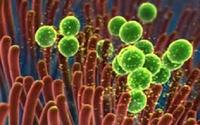
Researchers point the way to more sophisticated and targeted methods of ensuring our drinking water remains safe to drink, while still reducing the need for chemical treatments and identifying potential hazards more quickly.
-
-
Groundwater in Vietnam threatened by a new source of arsenic
In Southern Asia, an estimated 100 million people have been exposed to risks from groundwater contaminated with naturally occurring arsenic. The tainted water, used for drinking, agriculture, and industry, has resulted in a variety of serious health risks, including cancer. “Dig deep” to avoid naturally occurring arsenic contamination has been promoted as an answer to obtaining safe water in South Asia, but arsenic has been found in numerous deep wells drilled in the Mekong Delta region of southern Vietnam.
-
-
Global warming threatens South American water supply: study
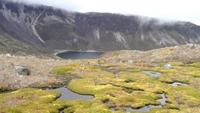
Chile and Argentina may face critical water storage issues due to rain-bearing westerly winds over South America’s Patagonian Ice-Field to moving south as a result of global warming.
-
-
Water reservoirs for hydroelectric dams are sources of greenhouse gas emissions
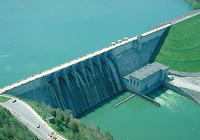
The large reservoirs of water behind the world’s 50,000 large dams are a known source of methane. Like carbon dioxide, methane is one of the greenhouse gases which trap heat near Earth’s surface and contribute to global warming. Methane, however, has a warming effect twenty-five times more powerful than carbon dioxide. The methane comes from organic matter in the sediments that accumulate behind dams.
-
-
Dams play an important role in water pollution control

Small dams, reservoirs and ponds trap water pollution, which provides an important benefit to water resources. This is especially relevant in agricultural lands of the Midwest U.S., where there are lots of small, but aging, dams.
-
-
Warming to reduce snow water storage 56 percent in Oregon watershed
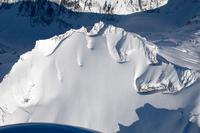
A new report projects that by the middle of this century there will be an average 56 percent drop in the amount of water stored in peak snowpack in the McKenzie River watershed of the Oregon Cascade Range — and that similar impacts may be found on low-elevation maritime snow packs around the world. The snowpack reduction may have significant impacts on ecosystems, agriculture, hydropower, industry, municipalities, and recreation, especially in summer when water demands peak.
-
-
Water purifier for soldiers, first responders successfully tested in the field
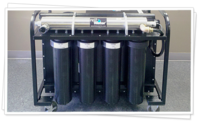
A new easy-to-carry water purifier that could give Marines and first-responders access to clean water wherever they go successfully completed its first operational test. The new purifier was developed to help reduce enormous logistical burdens already faced by forward-deployed personnel. There are two versions — one that can treat 1,000 gallons per day and one that can handle 5,000 gallons per day.
-
-
Protecting drinking water systems from deliberate contamination
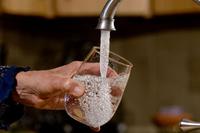
The importance of water and of water infrastructures to human health and to the running of the economy makes water systems likely targets for terrorism and CBRN (chemical, biological, and radionuclide) contamination. Reducing the vulnerability of drinking water systems to deliberate attacks is one of the major security challenges. An international project has developed a response program for rapidly restoring the use of drinking water networks following a deliberate contamination event.
-
-
Improved water purification technology reduces logistics burden
The logistics burden of supplying water to deployed troops is comparable to that of fuel and the economic cost is high. The Department of Defense (DoD) currently relies on a number of water desalination systems to produce clean water from local sources, but all of these systems have size, weight, and power (SWaP) constraints that affect their suitability for some missions. DARPA initiated the Materials with Novel Transport Properties (MANTRA) program to improve water desalination technologies and reduce their SWaP requirements.
-
-
Discoveries in nanotechnology to make clean, fresh drinking water more plentiful
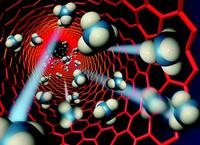
The University of Chicago and Ben-Gurion University of the Negev will begin funding a series of ambitious research collaborations that apply the latest discoveries in nanotechnology to create new materials and processes for making clean, fresh drinking water more plentiful and less expensive by 2020.
-
-
New microfluidic chip useful in counterterrorism, water and food safety
A new process for making a three-dimensional microstructure that can be used in the analysis of cells could prove useful in counterterrorism measures and in water and food safety concerns. Researchers developed a new microfabrication technique to develop three-dimensional microfluidic devices in polymers. Microfluidics deals with the performance, control, and treatment of fluids that are constrained in some fashion.
-
-
Current methods of reducing arsenic contamination of water are not effective
Arsenic is now recognized to be one of the world’s greatest environmental hazards, threatening the lives of several hundred million people. Naturally occurring arsenic leaches into water from surrounding rocks and once in the water supply it is both toxic and carcinogenic to anyone drinking it. New research finds that most of the current technologies used around the world to reduce arsenic contamination are ineffective.
-
-
Improving “crop per drop” boosts global food security, water sustainability
New study shows increasing crop water productivity could feed an additional 110 million people while meeting the domestic water demands of nearly 1.4 billion.
-
-
A majority on Earth will soon face severe, self-inflicted water shortage: scientists

A conference of 500 leading water scientists from around the world, held last week in Bonn, issued a stark warning that, without major reforms, “in the short span of one or two generations, the majority of the nine billion people on Earth will be living under the handicap of severe pressure on fresh water, an absolutely essential natural resource for which there is no substitute. This handicap will be self-inflicted and is, we believe, entirely avoidable.”
-
- All
- Regional
- Water
- Biometrics
- Borders/Immig
- Business
- Cybersecurity
- Detection
- Disasters
- Government
- Infrastructure
- International
- Public health
- Public Safety
- Communication interoperabillity
- Emergency services
- Emergency medical services
- Fire
- First response
- IEDs
- Law Enforcement
- Law Enforcement Technology
- Military technology
- Nonlethal weapons
- Nuclear weapons
- Personal protection equipment
- Police
- Notification /alert systems
- Situational awareness
- Weapons systems
- Sci-Tech
- Sector Reports
- Surveillance
- Transportation
Advertising & Marketing: advertise@newswirepubs.com
Editorial: editor@newswirepubs.com
General: info@newswirepubs.com
2010-2011 © News Wire Publications, LLC News Wire Publications, LLC
220 Old Country Road | Suite 200 | Mineola | New York | 11501
Permissions and Policies
Editorial: editor@newswirepubs.com
General: info@newswirepubs.com
2010-2011 © News Wire Publications, LLC News Wire Publications, LLC
220 Old Country Road | Suite 200 | Mineola | New York | 11501
Permissions and Policies
